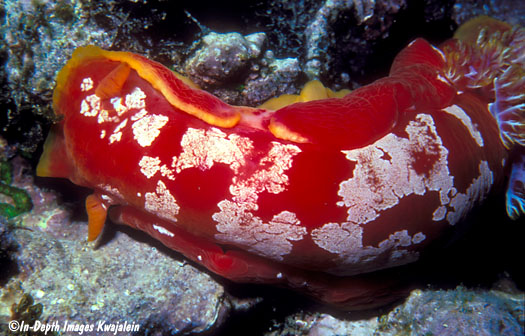
Hexabranchus aureomarginatus can be differentiated from the other endemic Hawaiian H. sandwichensis by the patches of opaque white on the dorsum (particularly of adult specimens), the yellow mantle margin, and generally smaller size. Also, their egg masses, instead of being made up of a large thin, dark pink coiled ribbon, are smaller, light pink, and have a thicker, stiffer appearance. Like H. sandwichensis, these can be found commonly on numerous intertidal and subtidal reefs around the Hawaiian Islands. I particularly remember finding quite a number of these in the tide pools along the lava coastline between Makapuu Beach and the pier a bit northeast up the coast. Unfortunately, I do not have a good numbers on which is more commonly found in which habitats, since for much of my Hawaiian nudibranch observation I had accepted the general view and lumped both Hexabranchus species together. I've had to relearn this lesson several times, but here's another example that if you're interested in studying populations and diversity, it is safer in the long run to err on the side of splitting a group into too many species rather than lumping them together into too few. Later on, if you change your mind, it is much easier to add together the numbers of two forms you originally counted separately than to figure out how many of each you had of two different species that you inadvertently lumped together into one pot.

Younger specimens of this species have fewer opaque white patches.
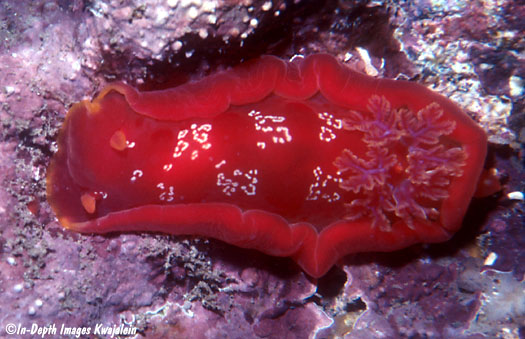
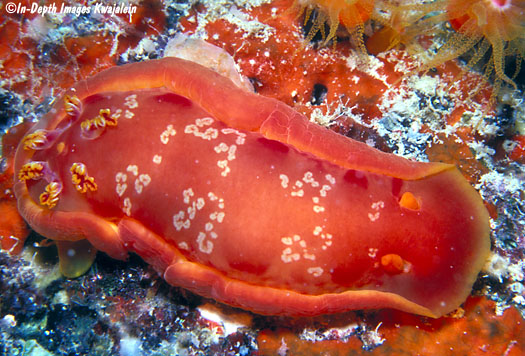
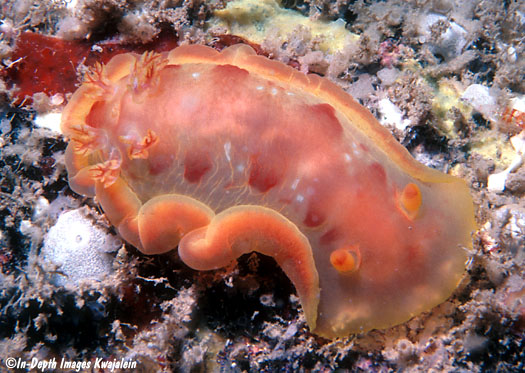
The yellow margin is still present in very young specimens.
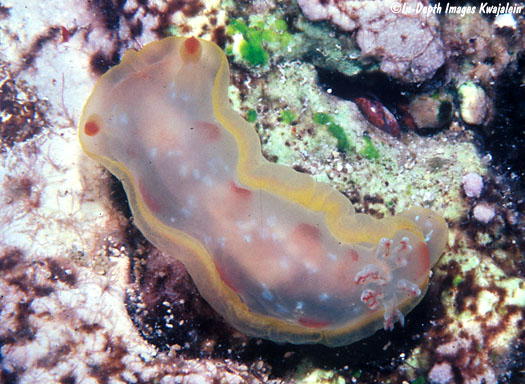
These are the egg masses of Hexabranchus aureomarginatus.
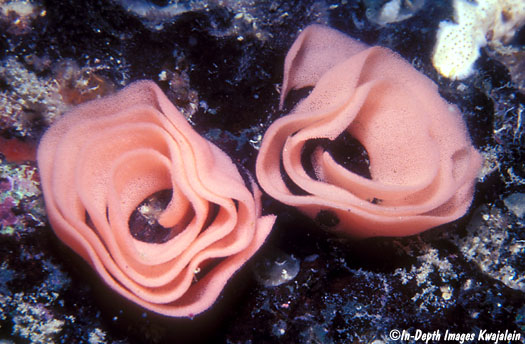
The specimen below appeared to be feeding on the yellow sponge.
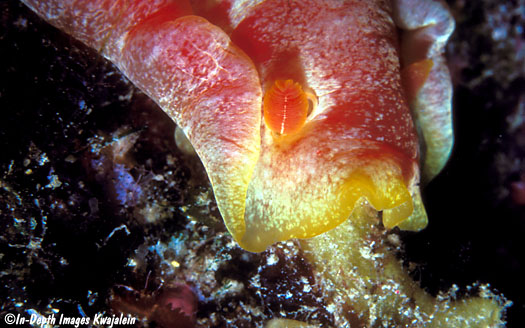
Created 20 April 2009
Updated 30 June 2023